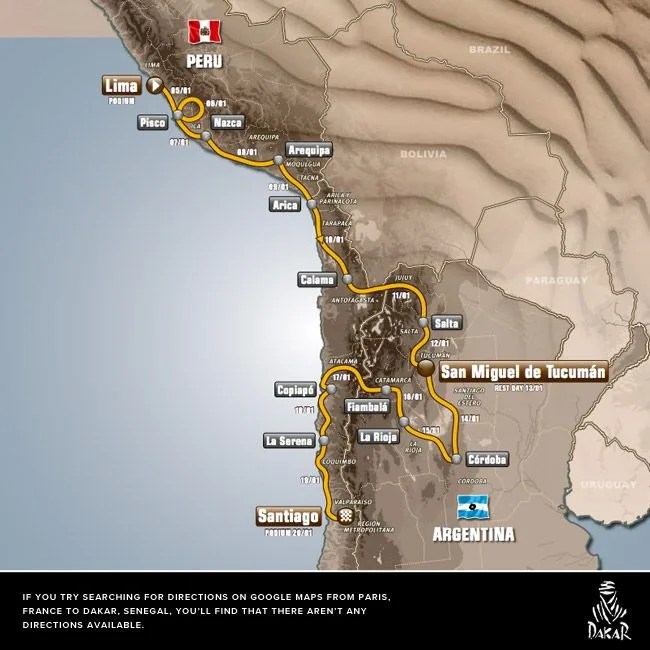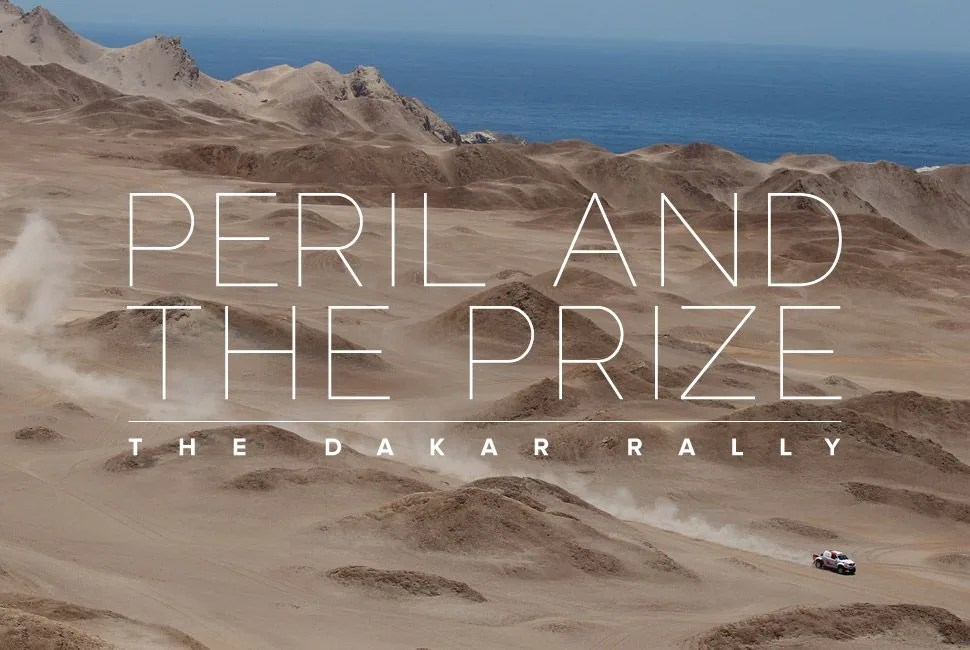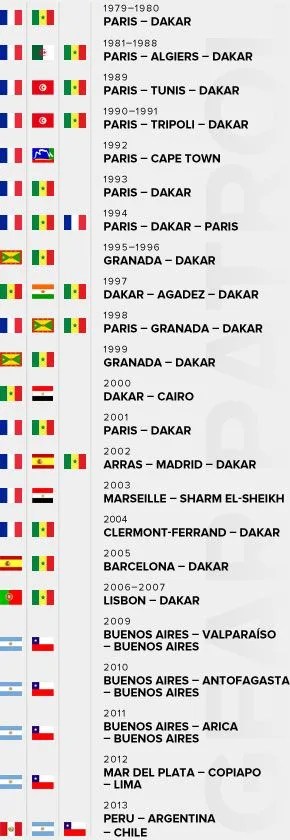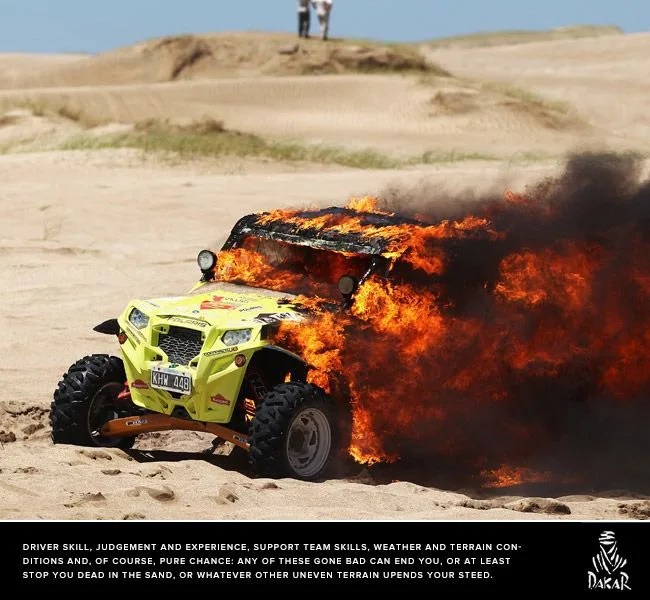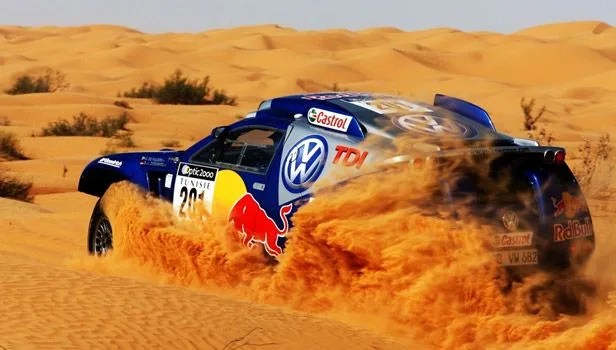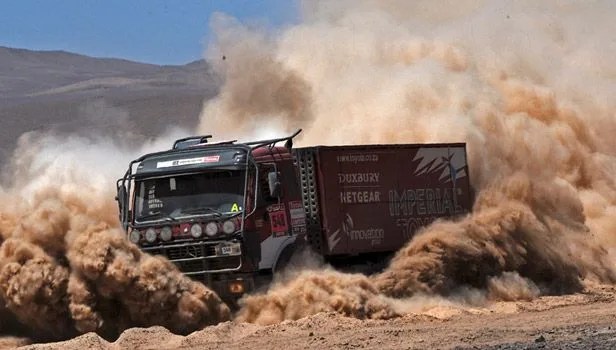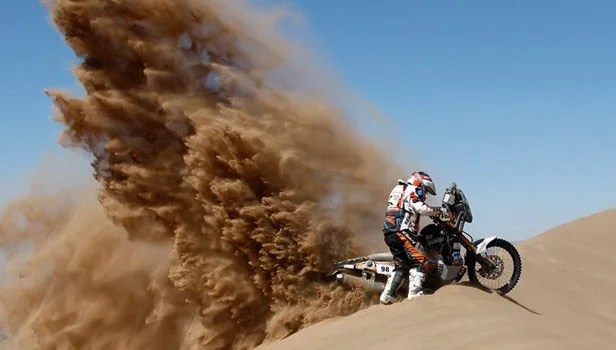Since even before the chariot races of the ancient Greek and Roman cultures, man has had an unquenchable thirst for competition, speed and danger. Not much has changed throughout the centuries, at least in the way of man’s drive to compete. What has changed, though, are the vehicles, the technology, the sheer variety of races and, of course, widespread media coverage. And while the rest of us (the race-hungry viewers across the country, that is) watch NASCAR, Indy and the American Le Mans Series, a race of an altogether different kind occurs on another continent — and both death and destruction are almost guaranteed.
OTHER MANLY RACES: The 24 Hours of Le Mans | Saratoga | Road to Ironman
That race is the Dakar Rally (a.k.a. the Paris-Dakar Rally), where professionals and amateurs alike strive for survival and victory by venturing out into the treacherous unknown in all manner of vehicles, battling to rank as one of the most skilled and hard-as-nails drivers in the world. And if standard tracks bore you, then the Dakar provides something different: there’s little in the way of tarmac to plant your tires on in this rally bonkers off-road endurance race that pits man and vehicle against mile upon mile of wheel-swallowing sand, water, dirt and rocks. If you make the mistake of thinking it’s just about driving fast, you might as well stick to your barcalounger and bouts of Gran Turismo 5 in the safety of your parents’ basement.
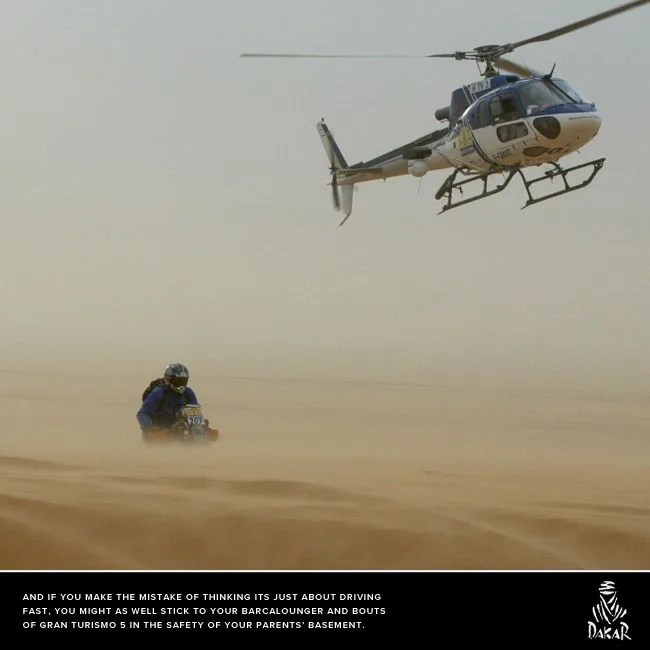
The craziness that is the Dakar Rally began in the late 1970s, birthed in the mind of French motorcycle racer Thierry Sabine when he became lost in the Tenere Desert in South Central Sahara during the Abidjan-Nice Race. When most men find themselves lost in the middle of a desert, they either panic or die (or usually, both). Sabine did neither. Instead, he realized that the desert would be the perfect location to hold a race, with the idea that racers from just about every experience level could participate in a grueling endurance competition spanning thousands of miles and various terrains. That’s exactly what he did by starting the first Paris-Dakar Rally in 1979. Sabine would spend the greater part of the next year planning and organizing the race, which started in Paris, France and ended in Dakar, Senegal (Africa).
Over the decades, the race has varied in both location and distance, with some iterations going as far as 6,200 miles (10,000 kilometers). The race, naturally, is broken up into stages, with drivers/riders traveling up to 560 miles per day in less than savory environments. Just 560 miles, you say? You’ve done college road trips longer than that. Sure — on pavement. Try traversing massive sand dunes and rocky terrain covering that kind of mileage, and the whole game changes. Search for directions on Google Maps from Paris, France to Dakar, Senegal, and you’ll find that there aren’t any available. And lest you think that in-car GPS provides a clear path through the various stages, GPS technology is limited to a rudimentary system that provides basic location details, which are limited to certain spots through each course — no turn-by-turn maps, whatsoever. Navigation is part in parcel of the challenge and what drives so many to try their hand (and the rest of their bodies) at the rigors of Dakar.
